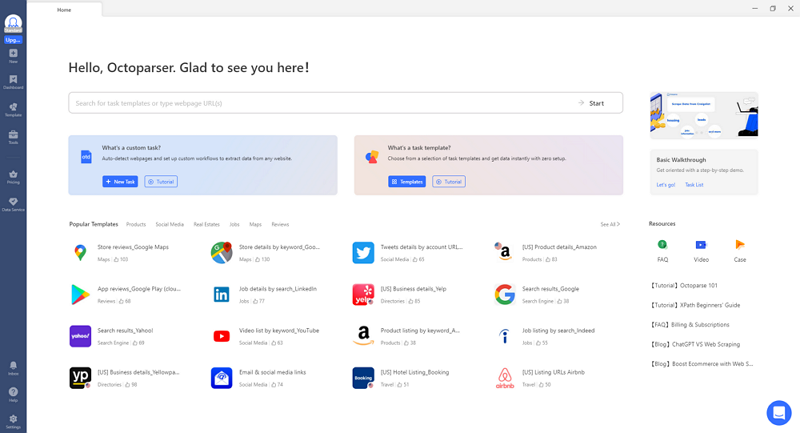Content research is the first and most important step in creating helpful, informative content that resonates with your audience. Thorough content research lays the groundwork for all successful content marketing campaigns.
What is Content Research
Content research involves investigating relevant topics, trends, competitor content, and audience needs to gather the insights and data required to develop compelling content that satisfies your readers. It ensures your content meets your readers’ requirements by answering their questions and solving their problems.
What to Collect for Effective Content Research
Effective content research involves collecting a wide range of key information to ensure your content provides value for your readers.
Keywords: Gaining an in-depth understanding of the keywords and phrases your target audience is using to search for information related to your niche and topic. This includes long-tail keywords, synonyms, and common misspellings. Identifying the right keywords allows you to create headings, titles, and meta descriptions that are visible and clickable to your prospects.
Competitor analysis: Conduct a thorough analysis of your major competitors’ topics, content formats (blog posts, eBooks, videos, etc. ), keywords, distribution channels, and social media strategies. You can fill market gaps by looking for trends, common themes, and trends. Find out how you can improve your content by benchmarking it against the best-performing content in your niche.
Industry statistics: Gather relevant industry facts, figures, and data from sources like reports, surveys, case studies, and white papers. Numbers related to customer pain points, costs, sales, growth rates, usage, and demographic data can be included in your content to support your recommendations and add credibility. Avoid using data from too many sources to maintain trustworthiness.
Case studies: Find examples of how other businesses in your industry have successfully implemented strategies you are recommending in your content. Include details on the challenges they overcame, results they achieved and lessons learned. Case studies bring your recommendations to life and show readers the potential impact.
Testimonials: Identifying complimentary quotes from experts, industry leaders, customers, and real people discussing their experiences. Incorporate testimonials and social proof throughout your content to build credibility, convince skeptics and increase purchases. Find quotes that resonate emotionally with readers to achieve maximum impact.
Trends: Staying up-to-date on emerging topics, technologies, and trends relevant to your niche and audience that you can discuss and provide insight on in your content. Analyze search data, market reports, social media, and news sources to identify trends to cover in your research. Provide context to show readers how trends impact them now or in the future.
Benefits of Content Research
Content research lays the foundation for content marketing success by enabling you to create material that effectively targets the right people, engages readers, and drives traffic.
Target the right people
With a deep understanding of your audience gained through research, you can identify their most pressing needs, challenges, and pain points. You can then structure your content around solutions that directly address these issues. You use the right keywords, examples, and calls to action tailored specifically for that audience. This high relevance draws in qualified readers that are most likely to convert into leads and customers.
Engage readers
By incorporating relevant data, trends, examples, and quotes uncovered in your research, you make your content more informative, relatable, and persuasive. Case studies and social proof show readers the tangible benefits they can gain. Statistics, images, and visuals break up walls of text for better readability and retention. The fresh credibility and insights you provide keep readers interested and coming back for more.
Drive traffic and leads
The rigor of your keyword research helps you identify the long-tail keywords and search phrases actually used by people searching for solutions to your topic. When you optimize your content around these keywords, you gain better visibility and ranking in search engines for the terms people use. As a result, you achieve higher organic traffic from qualified readers actively searching for a solution. This targeted traffic produces more qualified leads for your business at a lower cost.
Content research, in short, supercharges your content marketing by providing the insights, details, and credibility required to attract highly qualified readers, deeply engage them and convert more of that traffic into profitable leads for your business. The dividends of content research come from content that genuinely solves problems for people, which grows their audience and fosters customer loyalty.
Collect data with Octoparse in 4 Steps
A crucial part of content research is collecting relevant data from external sources like articles, blogs, and websites. Octoparse allows you to quickly scrape the web for valuable data through article scraping, keyword research, competitor analysis, etc.

With only FOUR steps, you can use Octoparse to scrape tons of relevant articles on any topic to discover the best keyword opportunities around your business, uncover the market trend, and observe strategies your competitors are using.
If this is your first time hearing about Octoparse, please feel at ease to give it a try. It’s an easy-to-use web scraping tool for anyone regardless of coding experience. You can download Octoparse and install it on your device first, and sign up for a free account to log in. Then, follow the steps below, you can grab data for your content research within clicks.
Step 1: Create a task
Copy the URL of the webpage you want to scrape and paste it into Octoparse. Click “Start” to create a new scraping task. The page will load in Octoparse’s browser.
Step 2: Auto-detect data
Click “Auto-detect webpage data” and Octoparse will scan the page and recommend relevant data fields. You can preview and delete unwanted data at the bottom.
Step 3: Configure the workflow
Ensure you’ve selected all needed data, then click “Create workflow”. Review each step to double check everything works correctly before running the task.
Step 4: Run the task and export the data
Click “Run” to start scraping. Octoparse will extract all data in the background. Wait for completion, then export the data as an Excel, CSV, or JSON file, or export the data to a database like Google Sheets for use in your content research.
Wrap-up
Content research lies at the heart of content marketing success. Tools like Octoparse enable you to gather a wealth of insights, examples, expertise, and data essential for creating resonant, impactful content that constantly improves over time. So invest in thorough content research – it’s the foundation for strong content that delivers real value to your readers and grows your business.




